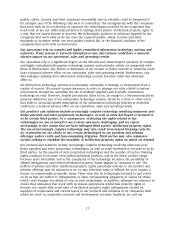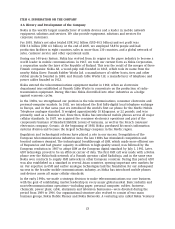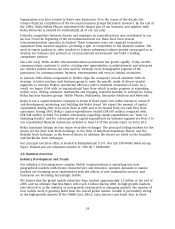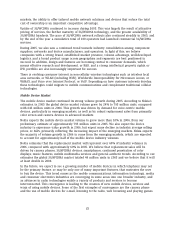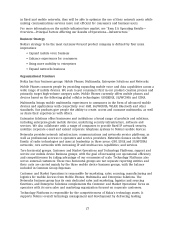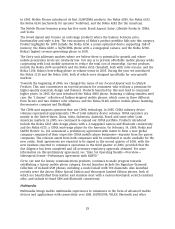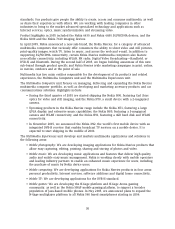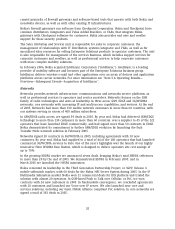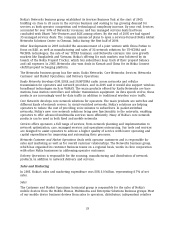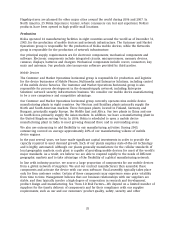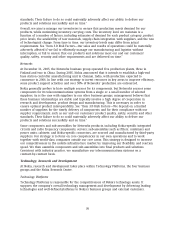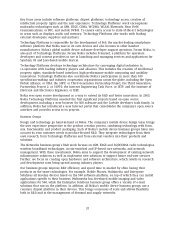Nokia 2005 Annual Report Download - page 29
Download and view the complete annual report
Please find page 29 of the 2005 Nokia annual report below. You can navigate through the pages in the report by either clicking on the pages listed below, or by using the keyword search tool below to find specific information within the annual report.in fixed and mobile networks, they will be able to optimize the use of their network assets while
making communications services more cost efficient for consumers and business users.
For more information on the mobile infrastructure market, see ‘‘Item 5.A Operating Results—
Overview—Principal Factors Affecting our Results of Operations—Infrastructure.’’
Business Strategy
Nokia’s strategy to be the most customer-focused product company is defined by four main
imperatives:
• Expand mobile voice business
• Enhance experiences for consumers
• Bring more mobility to enterprises
• Expand networks business
Organizational Structure
Nokia has four business groups: Mobile Phones, Multimedia, Enterprise Solutions and Networks.
Mobile Phones connects people by providing expanding mobile voice and data capabilities across a
wide range of mobile devices. We seek to put consumers first in our product-creation process and
primarily target high-volume category sales. Mobile Phones currently offers mobile phones and
devices based on the following global cellular technologies: GSM/EDGE, 3G/WCDMA and CDMA.
Multimedia brings mobile multimedia experiences to consumers in the form of advanced mobile
devices and applications with connectivity over GSM, 3G/WCDMA, WLAN, Bluetooth and other
standards. Our products give people the ability to create, access and consume multimedia, as well
as share their experiences with others.
Enterprise Solutions offers businesses and institutions a broad range of products and solutions,
including enterprise-grade mobile devices, underlying security infrastructure, software and
services. We also collaborate with a range of companies to provide fixed IP network security,
mobilize corporate e-mail and extend corporate telephone systems to Nokia’s mobile devices.
Networks provides network infrastructure, communications and networks service platforms, as
well as professional services to operators and service providers. Networks focuses on the GSM
family of radio technologies and aims at leadership in three areas: GSM, EDGE and 3G/WCDMA
networks; core networks with increasing IP and multi-access capabilities; and services.
Two horizontal groups, Customer and Market Operations and Technology Platforms, support and
service our mobile device business groups, with the goal of increasing our operational efficiency
and competitiveness by taking advantage of our economies of scale. Technology Platforms also
serves external customers. These two horizontal groups are not separate reporting entities and
their costs are carried mainly by the three mobile device business groups, with the balance
included in Common Group Expenses.
Customer and Market Operations is responsible for marketing, sales, sourcing, manufacturing and
logistics for mobile devices from Mobile Phones, Multimedia and Enterprise Solutions. The
Networks business group has its own dedicated sales and marketing, logistics and sourcing
functions, and Enterprise Solutions complements the Customer and Market Operations’ focus on
operators with its own sales and marketing organization focused on corporate customers.
Technology Platforms is responsible for the competitiveness of Nokia’s technology assets. It
supports Nokia’s overall technology management and development by delivering leading
27


